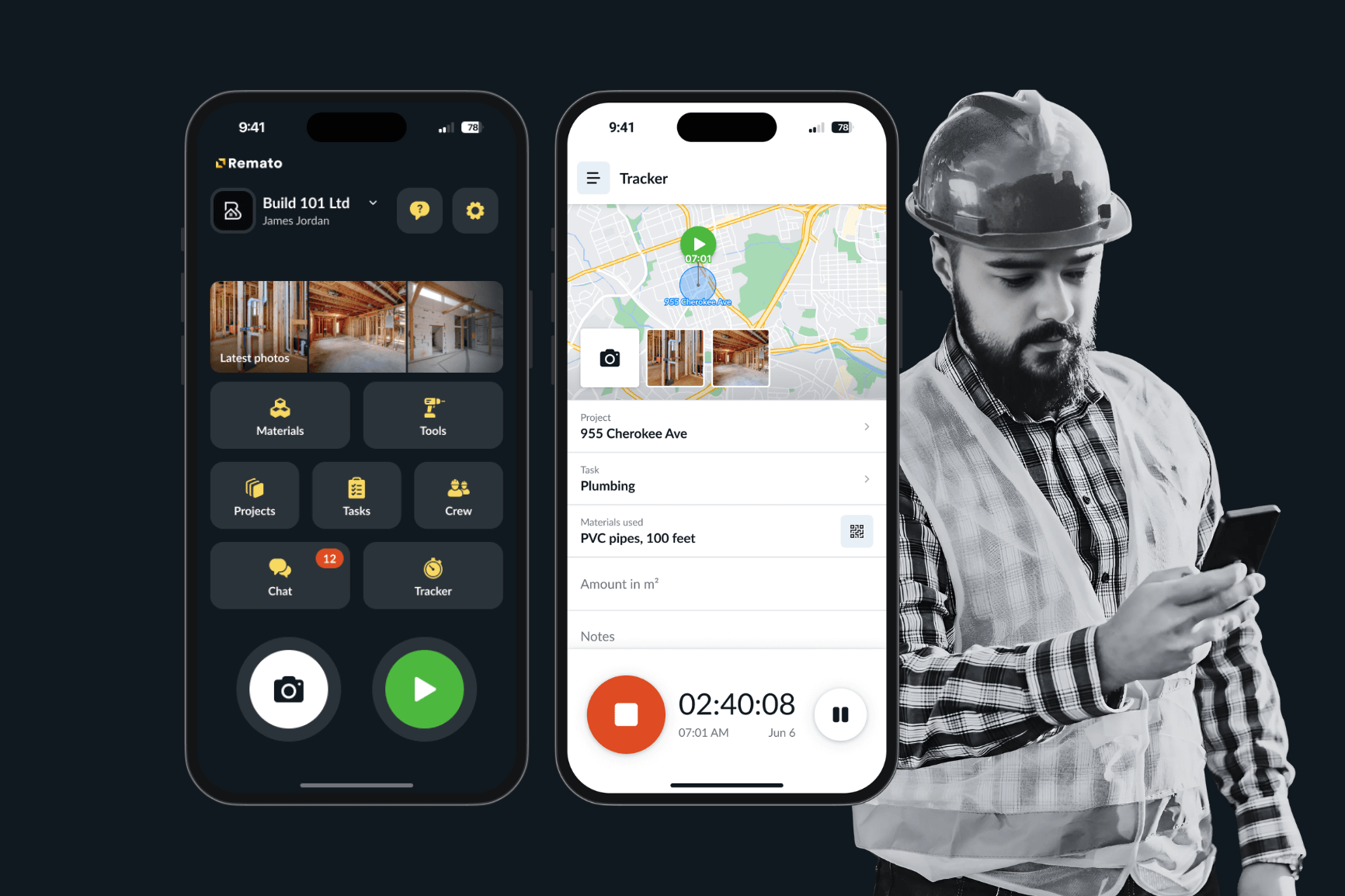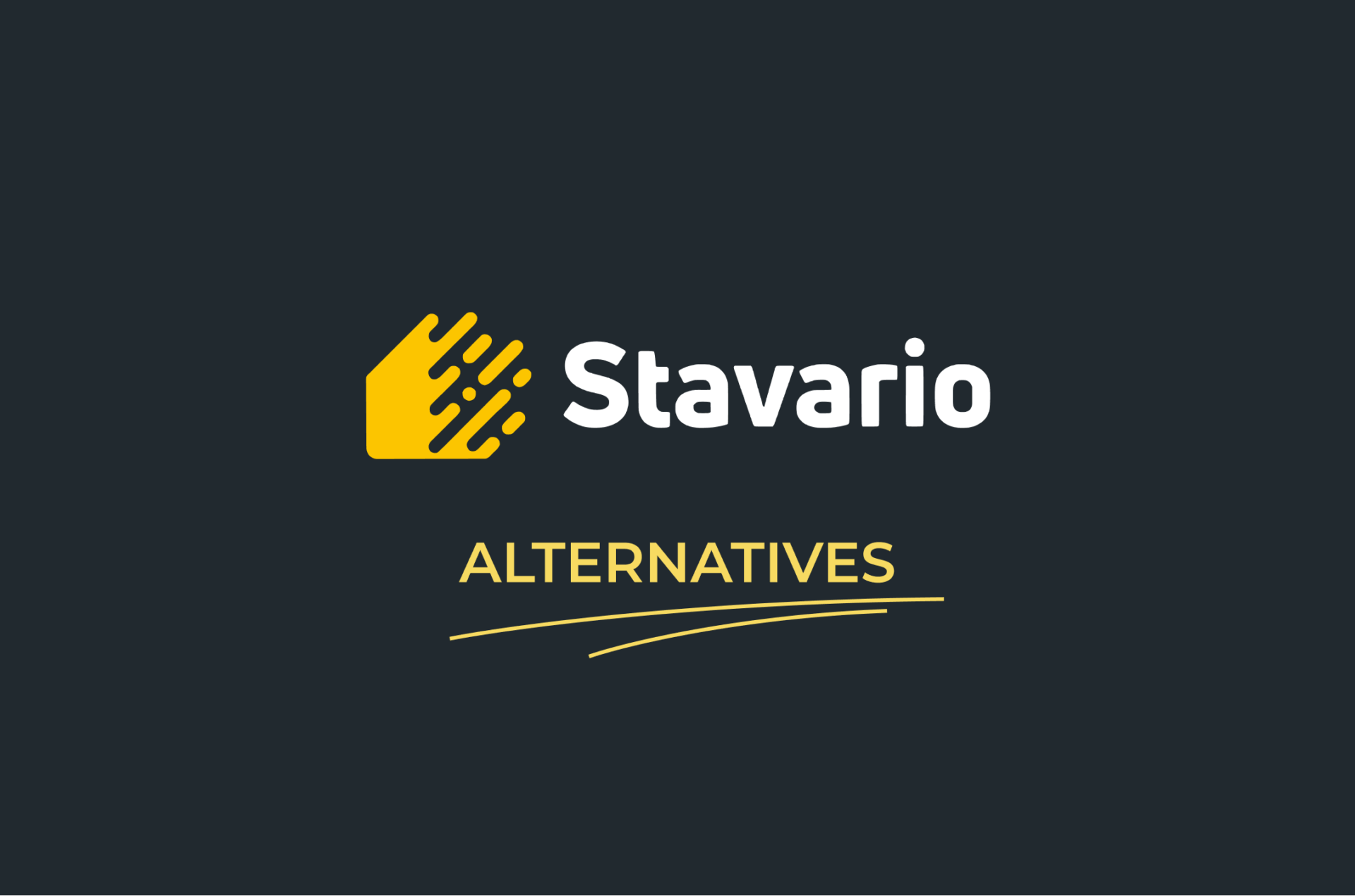Best Stavario Alternatives for Construction Management in 2025
Stavario has established itself as a well-known platform for bringing order and structure to construction operations. It offers a broad range of features designed to support contractors and site managers in their daily work.
However, some smaller or growing construction companies find that such a wide feature set can also make the software harder to navigate and slower to adopt. Many teams starting their digital journey are looking for tools that are easier to learn, faster to implement, and better suited for hands-on use in the field.
That’s why more contractors are exploring alternatives to Stavario, modern platforms that maintain essential functionality but focus more on simplicity, clarity, and everyday usability. In this article, we’ll look at some of the leading options available in 2025.
Table of Contents
What Is Stavario
Stavario is a construction management software platform developed in the Czech Republic to help contractors digitize their daily operations. Stavario connects office teams, site workers, and investors in one system accessible via web and mobile apps.
Key features include:
- Automatic electronic construction log that records weather, attendance, and photos.
- Time and attendance tracking through the mobile app.
- Task and documentation management for projects.
- Asset and tool tracking with barcode or QR scanning.
- Reporting and cost overviews generated from daily data.
What users like:
- Centralized project information in one system.
- Affordable pricing with unlimited users.
- Designed specifically for construction businesses.
What users find challenging:
- The interface can feel complex for smaller teams.
- Occasional stability or performance issues.
- No built-in chat or communication feature, leading many teams to rely on apps like WhatsApp.
Because of these trade-offs, many contractors start exploring Stavario alternatives that focus more on ease of use, reliability, and integrated communication while keeping essential construction management tools.
How to Choose the Right Construction Management Software

Selecting the right construction management platform can make a measurable difference in productivity, communication, and cost control. With so many tools available, the best choice depends on how your company operates day to day.
Here are some of the most important factors to consider:
1. Ease of use
- Software should be intuitive enough for everyone on the team, from project managers to site workers.
- A clean, visual interface helps new users start quickly and reduces training time.
2. Mobile and field functionality
- Field workers need to update information, upload photos, or log attendance directly from their phones.
- Offline access and real-time sync ensure accurate data, even when connectivity is limited.
3. Communication and collaboration
- Integrated communication tools help reduce reliance on separate messaging apps and keep project discussions in one place.
- Shared dashboards improve transparency between teams, clients, and subcontractors.
4. Scalability and flexibility
- The right software should grow with your business, supporting more projects, users, and modules without losing performance.
- Modular or tiered systems can help you pay only for what you need.
5. Reporting and visibility
- Look for platforms that transform site data into clear insights on time, costs, and progress.
- Automatic reporting saves time and ensures decisions are based on real numbers.
6. Support and implementation
- Reliable customer support and responsive onboarding resources can make or break the experience.
- Tools that are quick to deploy and easy to integrate often deliver faster returns.
Ultimately, the best solution is one that fits naturally into your team’s workflow, offering enough power to manage complex projects while staying simple enough for everyday use.
Best Stavario Alternatives
1. Remato

Remato is a construction management platform designed to simplify planning, coordination, and field operations. It helps contractors manage people, tasks, and tools in one connected workspace, reducing paperwork and improving communication between the office and the job site.
Key capabilities include:
- Scheduling and planning – Organize work, set priorities, and adjust plans as projects evolve.
- Time tracking: Log hours and attendance directly from the field for accurate records and easier payroll.
- Task management: Assign responsibilities, track progress, and ensure everyone knows what to do next.
- Tool and asset management: Keep track of equipment and materials to avoid losses and ensure accountability.
- Photo documentation: Capture and share site photos directly from the field, creating a clear visual record of progress and completed work.
- Field communication: Share updates, notes, and photos in context to keep projects moving efficiently.
- Mobile and web access: Connect field teams and office staff in real time with a consistent experience across devices.
Remato’s core strength lies in its simplicity and ease of adoption. The platform is designed so that even teams with limited software experience can start using it effectively within days, not weeks. Its clean and intuitive interface makes construction management more accessible, especially for companies that want to stay organized without adding unnecessary layers of complexity.
For many contractors, this balance of clarity and functionality makes Remato a practical and approachable alternative to Stavario, particularly for teams that value straightforward collaboration, reliable communication, and better control over tools and people.
2. PlanRadar
PlanRadar is a project documentation and task management tool used across construction and real estate. It’s designed primarily for issue tracking, site inspections, and communication between project stakeholders.
- Strengths: Excellent for managing documentation, photos, and punch lists directly from the field.
- Best for: Companies that prioritize reporting, compliance, and structured documentation workflows.
- Considerations: It’s strong on documentation but less focused on workforce management and day-to-day operational tracking.
Many construction managers appreciate PlanRadar’s flexibility when it comes to documentation standards and quality control. The platform’s ability to assign and track issues visually on project drawings makes it especially useful for teams that need to document every stage of a build. However, for companies seeking integrated time tracking, workforce planning, or asset management, complementary tools are often required.
3. Fieldwire
Fieldwire is a site coordination platform that helps construction teams manage tasks, drawings, and schedules in one place. It’s built for collaboration on the job site and is popular among general contractors and specialty trades.
- Strengths: Robust task management and blueprint markup tools that improve communication between teams.
- Best for: Field crews who need to manage detailed site activities and documentation directly from mobile devices.
- Considerations: Financial management and resource tracking features are limited compared with broader management platforms.
Fieldwire is often praised for its simplicity and reliability on the job site, where quick updates and offline functionality are essential. It’s particularly well-suited to teams that rely on accurate plan markups and real-time task tracking. However, organizations that require integrated financial controls or centralized tool management may find they need to supplement Fieldwire with other systems to cover all operational needs.
Digital Adoption in Small Construction Companies

For many small and mid-sized construction firms, switching from paper or spreadsheets to digital tools is a major step. The goal is simple: save time, improve accuracy, and keep projects on track. But adoption often fails when software feels complicated or unreliable.
Common challenges:
- Limited time and budget for training or setup.
- Field workers not used to using apps on-site.
- Systems that slow down instead of speeding up work.
- Technical issues or unstable connections that cause frustration.
What helps adoption succeed:
- Start small: Begin with one or two essential features like time tracking or task management.
- Choose simple tools: The interface should be clear, quick to learn, and easy for everyone to use.
- Prioritize reliability: Software must run smoothly even with weak connections or older devices.
- Go mobile-first: Field teams should be able to log updates, photos, and hours directly from their phones.
- Show quick wins: Visible improvements in coordination and reporting help teams stay motivated.
Why usability and reliability matter:
- Tools that are stable and easy to use see faster adoption.
- Teams gain confidence when the app works every day without errors.
- Reliable systems prevent lost data, missed updates, and wasted time.
Platforms like Remato and Fieldwire combine simplicity with reliability, giving smaller construction teams the confidence to move their daily operations online. By focusing on consistent performance and ease of use, they make digital adoption practical, not overwhelming.
Checklist: How to Evaluate a Construction Platform Before You Commit
Before deciding on a new construction management tool, it’s worth checking a few essentials to make sure the system truly fits your business. The right software should save time, not add new layers of complexity.
Use this checklist to guide your evaluation:
1. Is it easy for your team to use?
- Can field workers and office staff learn it quickly?
- Does the interface feel intuitive without constant support?
2. Does it cover your daily workflows?
- Time tracking, task management, and tool control are often the most-used features.
- Make sure the system fits the way your team already works, not the other way around.
3. How well does it work in the field?
- Is there a mobile app that works reliably, even with weak or no connectivity?
- Can users log updates, photos, and attendance on-site?
4. Does it improve communication?
- Look for built-in ways to share updates and assign tasks without switching to external apps.
- Centralized communication reduces confusion and saves time.
5. Can it scale as you grow?
- Will the software still work when you add more projects or teams?
- Check whether the pricing and structure make sense long term.
6. What kind of support is available?
- Is there responsive help when issues come up? Or do they use stupid AI bot?
- Does the company offer onboarding assistance or training materials?
7. How transparent is the pricing?
- Look for clear costs without hidden fees per user or project.
- Many modern tools, like Remato, offer flat or modular pricing models that make budgeting easier.
Choosing the right platform is less about finding the most feature-packed system and more about selecting one your team will actually use every day. The best construction software fits naturally into your workflow, helping projects run smoother without slowing your people down.
Frequently Asked Questions
1. What is Stavario?
Stavario is a construction management platform from the Czech Republic that helps companies track attendance, manage documentation, and organize site activities. It’s widely used by small and medium-sized contractors who want to move away from paper-based administration.
2. What are the best alternatives to Stavario?
Some of the best alternatives to Stavario include Remato, PlanRadar, and Fieldwire. These platforms offer simpler interfaces, reliable mobile apps, and features that help small and mid-sized construction companies manage projects, teams, and tools more efficiently.
3. What if moving to a new tool takes too much time and effort?
That’s a common concern. Many teams hesitate to switch because they fear long setups, data loss, or downtime. Modern construction platforms make migration much easier than it used to be. Most offer guided onboarding, data import options, and support to help you get started quickly.
4. How can I tell if the software is right for my company size?
If you run a small or mid-sized construction business, prioritize tools that scale easily but stay simple. You shouldn’t need a dedicated IT team to manage your software.
5. How can I be sure this investment will pay off?
Switching to a new construction management platform can feel like a big step, especially when your current system already “works well enough.” The payoff comes when everyday tasks become faster and simpler. Modern tools make migration smoother than most expect, data can often be imported automatically, and teams can start small with just one project or feature. The real return shows up in saved time, fewer manual errors, and better visibility between the office and the field.
Conclusion
Whether you’re switching from an existing platform like Stavario or taking your first steps into digital project management, the goal is the same: finding a tool that makes construction work simpler, not harder. The right software should save time, reduce admin, and keep everyone, office and field, on the same page.
Modern platforms such as Remato, PlanRadar, and Fieldwire focus on usability, reliability, and real-time collaboration. They help teams manage people, tasks, and tools with less effort while providing the stability needed for everyday site work.
Bonus tip: If you’re considering a change from Stavario, start small. Test the new software on one active project or a single feature, like time tracking or photo documentation. A focused rollout helps your team learn fast, spot quick wins, and build confidence for a full transition later on.
Whether you’re upgrading or going digital for the first time, the key is choosing software that fits how your team truly works day to day, and helps them do it better.
